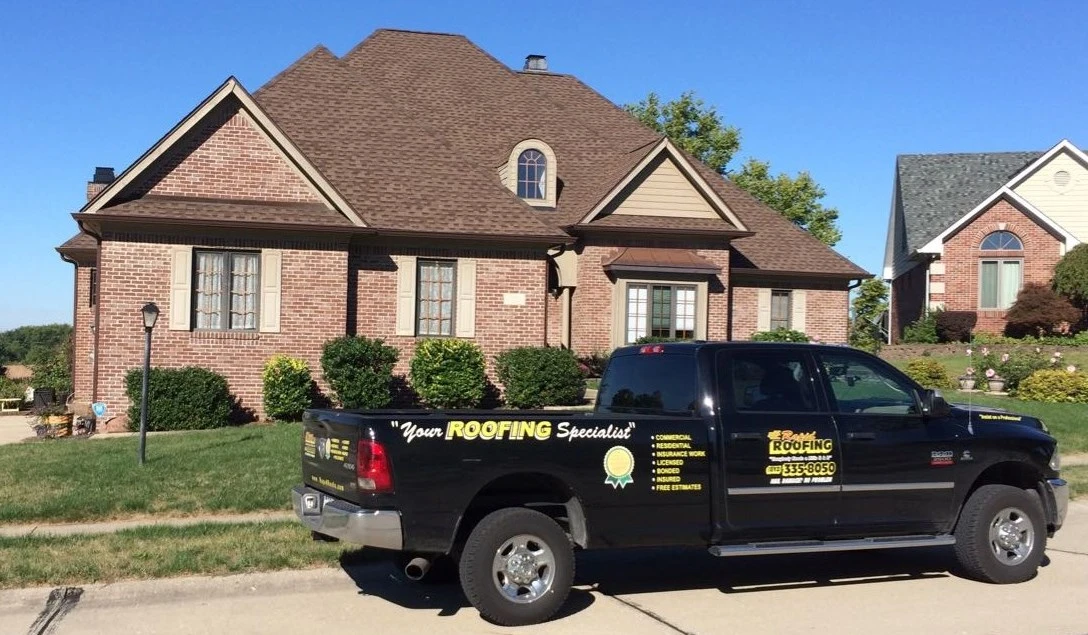
How to Shingle a Roof in 15 Simple Steps [DIY Guide]
Check out this easy guide on how to fix or renovate your house’s roof. If you aren’t confident in your DIY skills. Our knowledgeable team can help you ASAP!
How to Install Asphalt Shingles: 15 Steps (with Pictures)
Are you in need of a new roof? Maybe your steep roof was damaged due to an intense storm, or your rake edge deteriorated over many years of protecting you and your family.
No matter the reason, figuring out how to shingle a roof — and if you need a local professional to do so for you — is the best way to stay happy and stress-free.
Our pros show you how to do it right—and save thousands!
We have done the research for you, so you can learn how to shingle a roof in no time at all. Especially for those who have previous DIY experience, this could help you do some quick fixes on your own.
Roofing Safety
Before installing shingles, it is imperative to understand the order of steps to avoid any accidents.
Make sure that you only hire a roofing professional who is trained in roof safety, construction protocol, and building codes. Being aware can help avoid accidents from exposed nails, loose shingles, or sharp roofing nails.
Tear Off the Old Shingles

Part of installing a new roof is to get the roof clean. You can do so by removing the falling-apart asphalt shingles, cap shingles, or three-tab shingles.
Can You Roof a House Yourself?
For homeowners who have past DIY and handyman experience, starting a roofing project can be possible. You can do some of the less meticulous work, such as removing existing shingles, hammering in the nail heads, and using a roofing shovel to remove excess debris.
If you have never done a project on your own before, roofing a house on your own may be a little out of your league – but that is okay! We are roofing professionals who can help you from the first starter shingle to the last ridge shingle in no time at all.
Our hands-on contractors can remove your old roof, install new flashing, secure new shingles, and finalize the metal flashing in a breeze. Contact us today to get started with your project.
Planning for Shingle Installation
Before laying shingles, homeowners need to prepare their roofing materials and plot their course of action. Make sure the roof deck is securely attached to the trusses and roof edges without any gaping holes, deteriorating edges, or broken ridge shingles.
Ensuring the deck is prepared beforehand can help quicken your project and speed up the first installation of shingles.
Install the drip edge.

The first material you need to work with is the drip edge of the roof, the structure that protects the roof deck from excess water. Installing a drip edge can help with protecting the bottom edge of your entire roof.
Figure A: Roofing Overview
Understanding the different parts of a roof can help homeowners prepare their projects beforehand. Make sure you know specific terms, such as roof edge, top edge, and rake drip, before starting. Check out our gallery to gain some inspiration for your upcoming project!
Install Dedicated Starter Shingles
Specific shingles are crucial to following the manufacturer’s instructions and preventing any insecure materials on your house.
Be Safe and Follow Safety Protocols
Staying safe from the first to the last shingle is key to avoiding accidents or injuries.
Project Step-by-Step
Let’s look at the step-by-step basics of how you, or a professional, can install new roofing on your home.
Installing Roof Shingles
Installing roof shingles does not have to be complicated. You can do so on your own by finding standard shingles, following safety protocol, and repeating the same process over and over again.
Cover the Roof With Felt Paper
Determine the area of the roof’s surface, including the rake edges and all the shingles. Cut the felt paper using a hook blade and unroll it to see how many shingles it will cover. Apply the bonded layer to the top.
Installing New Flashing

Install the new flashing to the eave of the home by pressing it to the drip edge. Use the chalk lines to help you straighten the flashing against the edge.
Stick the Bottom Part of the Underlayment to the Roof of the House
Attach the tabs of the drip edges to the ice dams and wood shakes by using six nails. Press the tabs firmly down to ensure they fit snugly against the exterior walls.
Working Around Vents and Stacks
Before you install your first ridge shingle, make sure you plan around the vents and stacks on your roof.
Begin With Starter Shingles
To begin your starter course, you need to lay down the first strip using a glue strip along the edge of the roof.
Run Shingles Long, Then Trim Them Off
Cut the material in a line for the top of your roof and the overhanging sections.
Fold Flashing Over the Peak
The next step is to install flashing and starter shingles using a starter strip. Place the tab of the flashing on the strip, using two nails to keep it in place on edge. Make sure that you do not attach the flashing to the vertical chalk line.
Install the Shingles

Now that the house is finally prepared, you can begin installing shingles. Install the first course of shingles flush with the ice and water protector, forming a straight line vertically against the eave of the roof.
Overlap the Ridge
The hip caps and ridge caps are essential to ensuring water flows over the siding of the home. Ridge cap shingles go over the hip roof to help provide wind resistance and rain runoff. The final ridge cap is sealed with a roofing cement to increase its durability.
Install Step and Dormer Flashing
Step flashing is essential for preventing water from entering and bypassing the dormer. Homeowners can
Add the Vent Flashing
Install the vent flashing around the roof’s vent by placing the shingles over the base. Lift the base or the boot, and add the sealant to secure the vent flashing along the bottom edge. The additional height forces run-off water to bypass the vent.
Shingle Over the Vent Flashing
Add the second course, making sure to overlap the top of the vent flashing to prevent any gaps or holes.
Add Ventilation
Add ventilation to your home by selecting either hooded, rectangular, or soffit vents for your roof. We recommend installing the vent hole near the peak and eaves.
Are you in need of a new roof? Contact us today to get started!

Comment (0)